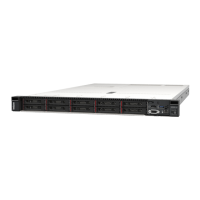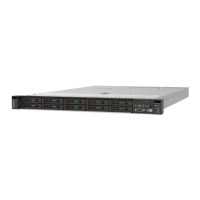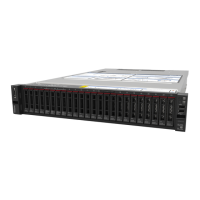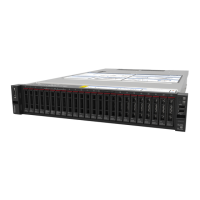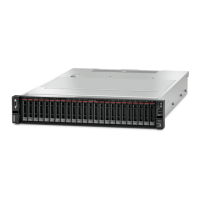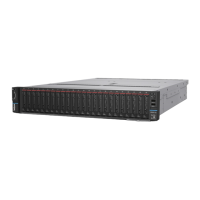Security advisories
Lenovo is committed to developing products and services that adhere to the highest security standards in
order to protect our customers and their data. When potential vulnerabilities are reported, it is the
responsibility of the Lenovo Product Security Incident Response Team (PSIRT) to investigate and provide
information to our customers so they may put mitigation plans in place as we work toward providing
solutions.
The list of current advisories is available at the following location:
https://datacentersupport.lenovo.com/product_security/home
Power on the server
After the server performs a short self-test (power status LED flashes quickly) when connected to input power,
it enters a standby state (power status LED flashes once per second).
The server can be turned on (power LED on) in any of the following ways:
• You can press the power button.
• The server can restart automatically after a power interruption.
• The server can respond to remote power-on requests sent to the BMC.
For information about powering off the server, see “Power off the server” on page 11.
Power off the server
The server remains in a standby state when it is connected to a power source, allowing the BMC to respond
to remote power-on requests. To remove all power from the server (power status LED off), you must
disconnect all power cables.
To place the server in a standby state (power status LED flashes once per second):
Note: The ThinkSystem System Manager can place the server in a standby state as an automatic response
to a critical system failure.
• Start an orderly shutdown using the operating system (if supported by your operating system).
• Press the power button to start an orderly shutdown (if supported by your operating system).
• Press and hold the power button for more than 4 seconds to force a shutdown.
When in a standby state, the server can respond to remote power-on requests sent to the BMC. For
information about powering on the server, see
https://thinksystem.lenovofiles.com/help/topic/7Y98/bmc_user_
guide.pdf
.
Chapter 1. Introduction 11
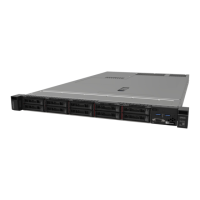
